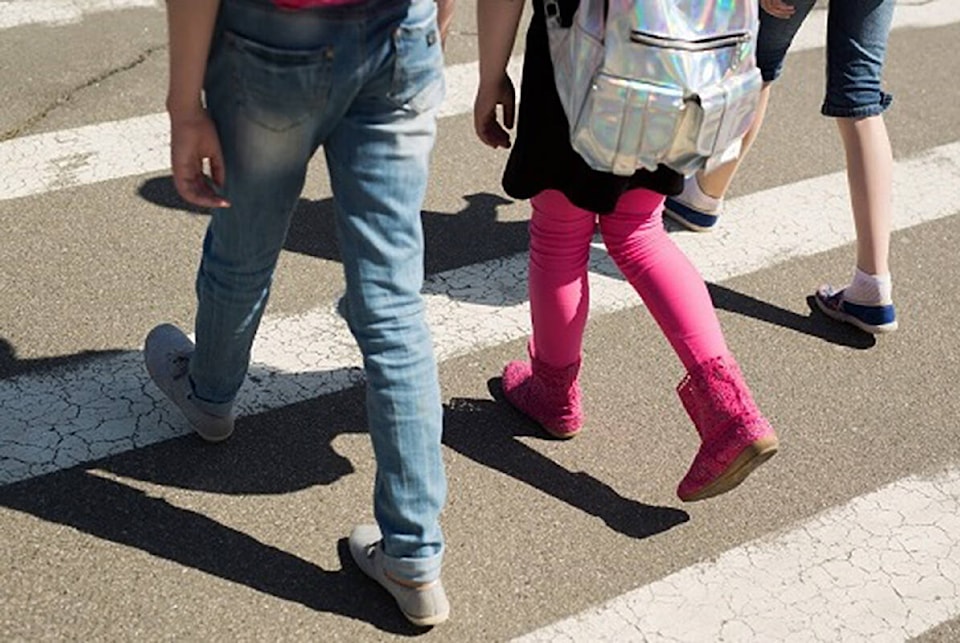With a return to school, there is a return to traffic, and to children around busy streets.
ICBC is asking drivers to leave extra travel time, stay focused on the road and watch for children, especially around school zones.
Every year in B.C., five children are killed and 370 are injured in crashes while walking or cycling. In school and playground zones, 66 children are injured in crashes every year.
Last year, over 6,940 drivers were ticketed for speeding in school and playground zones in B.C.
Police and Speed Watch volunteers will be closely monitoring drivers’ speeds in school zones to help children get a safe start to the school year.
ICBC’s tips for drivers:
• Every school day, unless otherwise posted, a 30 km/h speed limit is in effect in school zones from 8 a.m. to 5 p.m. In playground zones, a 30 km/h speed limit is in effect every day from dawn to dusk.
• Leave your phone alone, and watch for children walking or cycling. Distraction is the leading factor for drivers in crashes involving pedestrians and cyclists.
• If a vehicle’s stopped in front of you or in the lane next to you, they may be yielding to a pedestrian, so proceed with caution and be prepared to stop.
• Watch for school buses. When their lights are flashing, vehicles approaching from both directions must stop.
• Before getting into your vehicle, walk around it to make sure no small children are hidden from your view. Always look for pedestrians when you’re backing up.
• In residential areas, a hockey net or ball can mean that kids are playing nearby. Slow down and watch for children as they could dash into the street at any moment.
ICBC’s tips for parents:
• Drop off. If you drop off your child in a school zone, allow them to exit the car on the side closest to the sidewalk. Never allow a child to cross mid-block.
• Plan your child’s walking route to school with them ahead of time. Review street names and landmarks to orient them. Make a fun, interactive game out of guessing the correct traffic signs and meanings with your child along the route.
• When crossing, stop at the curb. Look left and right for oncoming vehicles, then look left over your shoulder for vehicles that might be turning. Make sure all vehicles have stopped before entering the road. Make eye contact with drivers before crossing, even if the walk signal is on. When the intersection is clear, start crossing and keep looking for approaching vehicles.
• Set a good example. Never jaywalk or run to cross the street. Where possible, cross at intersections with a pedestrian crossing light or marked crosswalk.
• Put away the electronic gadgets, cell phone and ear buds while walking or cycling so you can hear approaching traffic that may be hard to see.
• Wear bright clothes and/or reflective gear especially at night and in poor weather.
• Only cross railway tracks at designated signals or signs and watch your step. Discourage play around or on railways.
• Avoid shortcuts through parking lots or around parked cars where it’s harder for drivers to see small children.
• Walk on the inside edge of the sidewalk away from the road, so you’re further away from traffic. Walk facing oncoming traffic if there isn’t a sidewalk, so you can see approaching vehicles and make eye contact with drivers.
READ ALSO: Homeowner not concerned after cougar spotted jumping gate of B.C. home
READ ALSO: Video of dancing cops in Northern B.C. goes viral
Is there more to the story? Email: ncorbett@mapleridgenews.com
Like us on Facebook and follow us on Twitter.
